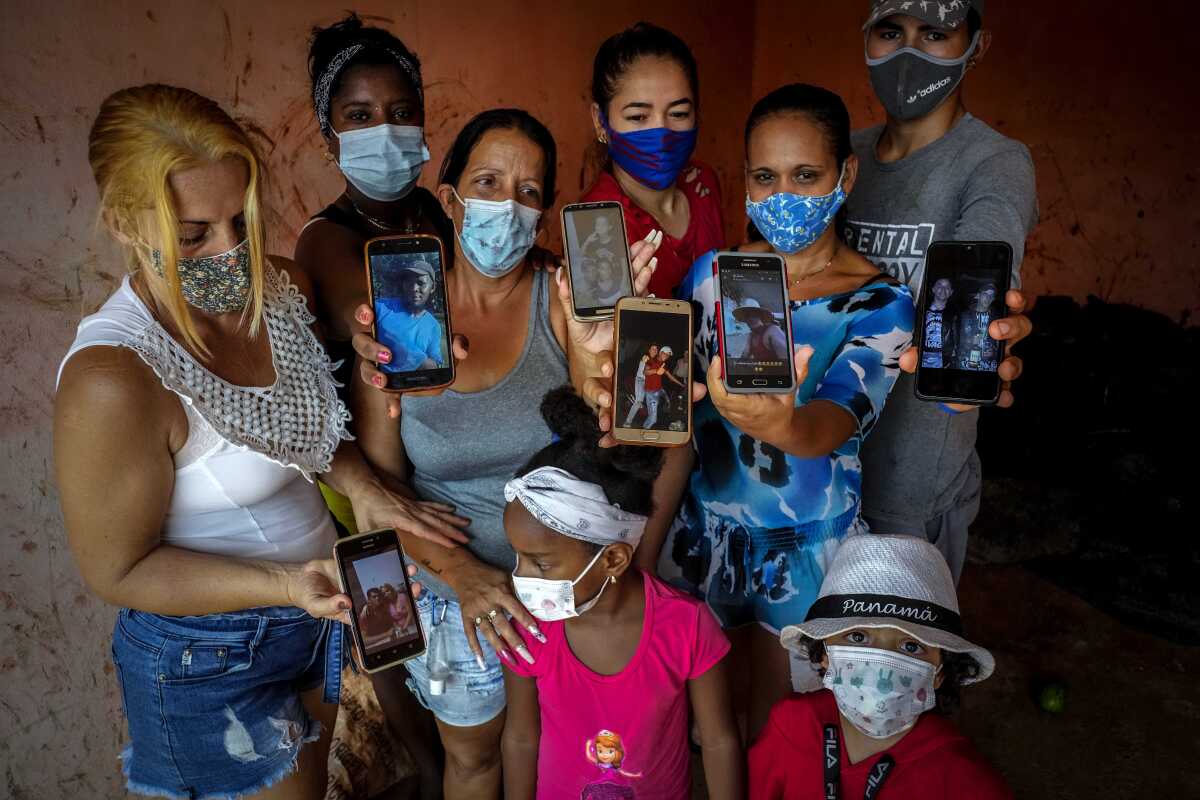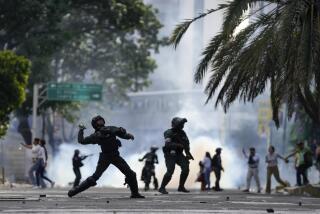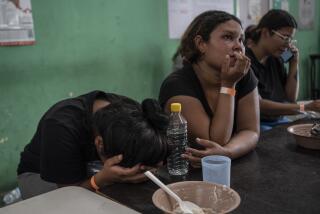More Cubans try dangerous trip to U.S. across Florida Strait

- Share via
ORLANDO NODARSE, Cuba — Zuleydis Elledias has gotten up each morning for the last two months hoping for a phone call, a message — any news on the fate of her husband and nephew, who disappeared at sea after the boat they were in capsized as they tried to reach Florida.
Another half-dozen families in the small town of Orlando Nodarse, 35 miles west of Havana and near the port of Mariel, are living with the same uncertainty.
“Due to the pandemic, my husband lost his job. Many places closed, and he had been home for more than a year. Every time he went to his workplace, they told him to wait. And that made him desperate because we have a 2-year-old son,” Elledias, a 38-year-old homemaker, told the Associated Press through tears.
Cuba is seeing an increase in unauthorized migration to the United States, fueled by an economic crisis exacerbated by the pandemic, increased U.S. sanctions and cutbacks in aid from Venezuela. That has led to shortages in many goods and protests that shook the island July 11.
And legal ways to leave have been strained by the Trump administration’s near-closure of the U.S. Consulate in 2017 following a series of mysterious illnesses among diplomatic personnel that some said may have resulted from an attack — allegations Cuba denies.
Most Cubans who want to try for a U.S. visa now have to go to embassies in other countries — and getting there is almost impossible due to sharp cuts in air traffic during the pandemic. Most can’t afford tickets anyway unless relatives can front them the money.
That has pushed many Cubans to launch themselves into the sea on small boats or rafts to attempt the dangerous crossing of the Florida Strait.
The U.S. Coast Guard said recently it has intercepted 595 Cubans at sea since the current fiscal year started Oct. 1. That’s larger than any full fiscal year since 2017 — during which the U.S. announced that even Cubans reaching U.S. shores were likely to be expelled, ending a long-standing policy of granting asylum to those who reached dry land.
It’s still small in comparison with the nearly 5,400 halted at sea in 2016 or the dramatic crises of 1994-95 and 1980, when Cuba’s government temporarily stopped trying to block departures and tens of thousands set out en masse. Thousands died at sea.
It’s also still far smaller than the current flow of those who have somehow made their way to the continent and worked their way north. The U.S. Border Patrol had recorded 26,196 Cubans trying to enter the U.S. illegally between Oct. 1 and June 30, most by land.
As well as her husband — 45-year-old driver Fernando Quiñones — Elledias is also awaiting word on her nephew Ismel Reyes, 22, who worked on a farm.
They were among a group of 18 men and two women who left Cuba for Florida on May 25. The boat sank the following night and survivors were rescued by the U.S. Coast Guard about 18 miles southwest of Key West, Fla. The search by sea, land and air lasted for days.
“Something happened, I don’t know, the currents, the boat flipped. The United States Coast Guard rescued eight people alive, found two bodies, and there are 10 people missing,” Elledias said.
Among the survivors were four cousins of Elledias, some of whom have already been repatriated to Cuba.
Elledias, her sister Sudenis — Reyes’ mother — and other Orlando Nodarse residents who spoke with the AP all agreed that the risky decision to head for the United States was triggered by the economic crisis and the difficulties in obtaining a visa.
Cuban historian Alina Bárbara López noted that two earlier mass exoduses by sea were spawned by crises, and Cuban authorities opened the borders as a kind of release valve in the face of social pressure.
In 1980, with unhappy Cubans pouring into foreign embassy compounds seeking visas, Fidel Castro opened the port at Mariel for people who wanted to leave and 125,000 Cubans rushed north, setting off a political crisis for the Carter administration.
The economic tailspin of the early 1990s after the collapse of the Soviet Union — and its aid to Cuba — led tens of thousands to put to sea in inner tubes, makeshift rafts and hijacked boats. Then too, many died.
But now Havana is “trapped” because it cannot open its borders due to migration agreements signed with Washington in the wake of that crisis, she said.
Meanwhile, Cuba’s economic reforms have been only superficial, López said. The economy remains stagnant.
“All this makes the underlying political foundation of this crisis much stronger than in the previous” crises, she said.
Cuban authorities acknowledge there are “symptoms” of a possible migratory crisis but say it could be deactivated if President Biden fulfills a campaign promise to jettison Trump’s tighter sanctions, which were aimed at trying to drive the Communist Party from power, and resumes the dialogue launched by former President Obama.
“The situation we have now is the result of a number of negative factors,” said Jesús Perz Calderón of the United States department at Cuba’s Foreign Ministry. “In the first place, the deterioration of the economy as a result of COVID-19 ... but at the same time the resurgence of an economic war of blockade against Cuba by the United States.”
José Ramón Cabañas, a former Cuban ambassador to the U.S. and current director of the Center for International Policy Research, said both nations have instruments in place to prevent an exodus to Florida.
“There are agreements in force, but they are not being fully applied,” Cabañas said.
The U.S. had provided 22,000 visas a year to Cuba for two decades until 2017, when Trump froze relations. The consulate shutdown made applying for a visa almost moot for most Cubans.
In addition, at the beginning of 2017, Obama eliminated the policy known as “wet foot-dry foot,” which let Cubans who reached U.S. shores remain, usually as refugees, while those caught at sea were sent back.
Back in Orlando Nodarse, Elledias hopes a miracle will bring home her loved ones.
“I would tell people who are thinking about this option not to do it, that it is not a safe route. There is no money in the world that can pay for this suffering we are going through,” she said.
More to Read
Sign up for Essential California
The most important California stories and recommendations in your inbox every morning.
You may occasionally receive promotional content from the Los Angeles Times.










